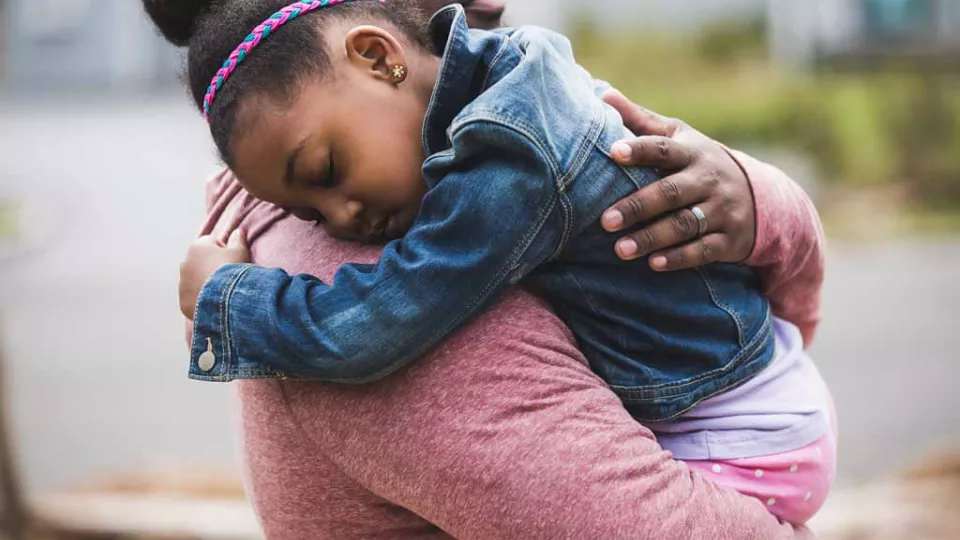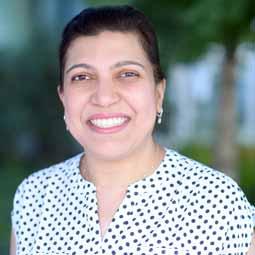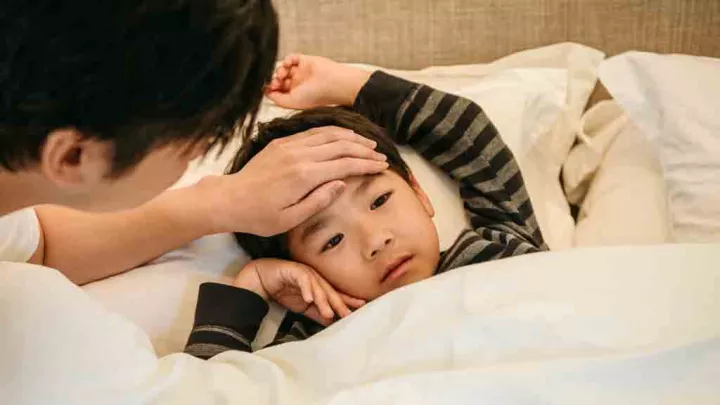
Spotting Long COVID Symptoms in Children
It’s one of the more mysterious aspects of COVID-19—a condition called long COVID. While most people recover from the virus within two to four weeks, others can struggle for months afterward with lingering, often debilitating symptoms.
Long COVID has been most commonly talked about in adults, but children can experience it, too—even if they didn’t have any symptoms with their initial COVID infection. That can make the condition challenging to diagnose.

“Many children don’t have any symptoms when they have a COVID infection,” says Sindhu Mohandas, MD, a pediatric infectious disease specialist and Attending Physician at Children’s Hospital Los Angeles. “So if the symptoms of long COVID appear later, it can be difficult to link them to the coronavirus.”
Is it long COVID?
Unlike COVID-19, there is no simple nasal swab or other diagnostic test for long COVID. Doctors instead look at a child’s pattern of symptoms, as well as past exposure to the virus.
Those symptoms can vary widely from patient to patient, but in children, the most common long COVID symptoms are:
- Unusual tiredness/fatigue
- Headaches
- Difficulty concentrating, or “brain fog”
Children can also experience:
- Shortness of breath
- Sore throat
- Unexplained fevers
- Exercise intolerance
- Fast heartbeat
- Chest pain
- Loss of smell or taste
- Muscle or nerve pain
- Sleep disorders
- Diarrhea, vomiting or constipation
- Anxiety
- Depression
Long COVID symptoms are persistent, lasting more than four weeks after a COVID-19 infection. Symptoms can vary between children. For example, one child may have a headache for a couple of hours every day, where another may have a headache a few times a week.
The condition also interferes with normal activities. A child who was previously a strong student may now have difficulty completing assignments. An athlete may no longer have the energy to take part in sports.
“Long COVID can be more severe in some patients than in others,” Dr. Mohandas notes. “But it can significantly impact the quality of life for the child, and consequently the entire family.”
Past exposure to COVID
Symptoms alone are not enough to diagnose long COVID, though, especially since they can be caused by other conditions. That’s why doctors also look for whether a child was previously exposed to the coronavirus.
This link is much easier to make for children who had a positive COVID-19 test or clear COVID symptoms in the past. For those who were never tested or never felt sick, doctors look closely at the family history and whether there were any known virus exposures for the child.
Antibody tests can indicate a past COVID infection, too. “The one caveat is that if a child is vaccinated, the antibodies may be because of the vaccine and not infection,” Dr. Mohandas explains. “However, we can order a test that distinguishes between those different antibodies.”
Long COVID treatment
Although there is no definitive cure for long COVID, But it is still important for children to be diagnosed, because often the symptoms can be managed.
“If you think your child might have long COVID, or you’re just worried about the symptoms, see your pediatrician,” she says. “Even if it’s not long COVID, there could be something else going on. Your doctor will be able to evaluate your child and decide if the child needs to be seen at a specialized center.”
This past summer, Children’s Hospital Los Angeles launched a dedicated Long COVID Recovery Care service—one of only a few of its kind for children in California. Dr. Mohandas says many families she’s seen struggled for months to find a diagnosis before coming to Children’s Hospital.
“These families are so grateful to finally understand what is happening with their child,” she adds.
A thorough exam can help rule out other causes for a child’s symptoms or help pinpoint if specific organs are affected. For example, if a child is having chest pain, an EKG and echocardiogram (ultrasound of the heart) can check for structural changes or damage to the heart.
Fortunately, children with long COVID typically do get better, though it can sometimes take many months.
“The most important thing is time and rest,” Dr. Mohandas says. “But we may also be able to provide supportive care to help manage a child’s symptoms. All this can be done safely if we’ve ruled out other conditions or causes.”
‘The million-dollar question’
So far, it seems that long COVID is more common in adolescents 12 and older than in younger children. But that’s not known for sure. In fact, little is understood about how many children get long COVID—or why they get it in the first place.
“That’s the million-dollar question right now,” Dr. Mohandas says. “The most important thing is defining how prevalent this problem is in children, and then we need to understand why it’s occurring. If we can understand the cause, we can then develop treatments.”
Children’s Hospital Los Angeles is actively trying to find those answers. Recently, the hospital was awarded $8.3 million from the National Institutes of Health to participate in a national study called RECOVER (Researching COVID to Enhance Recovery). The study aims to better understand the after-effects of COVID-19 infection.
In the meantime, Dr. Mohandas stresses that the best strategy for long COVID is prevention.
“It is critically important to get children vaccinated when they are eligible, and to follow local masking and distancing guidelines,” she says. “The best thing you can do to prevent long COVID is to prevent COVID-19.”

